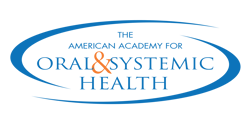Communicating the Overall Wellness Message in the Dental Operatory: An Opportunity for Healthier Patients
There is a new opportunity in every restorative dental practice revolving around periodontal medicine and overall wellness. As vascular disease continues to be redefined as an inflammatory disease, and not a cholesterol disease, reducing total body inflammation is a goal of treatment. Research is clear that periodontal pathogens influence many processes that contribute to vascular health and ultimately affects “vascular biology” including the heart and brain.1 Additionally, compelling research suggests that periodontal disease is a medical condition of the mouth which is now cross referenced to impact 57 other whole-body diseases2.
Due to the frequency of appointments and amount of time we get to spend with patients during a year, the dental team is ideally positioned to screen for and identify other oral conditions that can significantly affect whole-body health. We have the potential to not only save lives, but also increase the vitality and longevity of those we save.
However, taking advantage of this opportunity requires a shift in not only the range of health topics we discuss with patients, but how we deliver the wellness message. We want to make sure everyone in our practice knows when they have an oral condition that may affect their systemic health. Many patients are aware that the mouth affects the body but are unfamiliar with all the ways we can help.
How do we get these complex, multifactorial concepts across to patients who are unfamiliar? “How you say it” becomes very important in bringing the patient along in awareness, understanding and treatment acceptance. Utilizing honed communication skills as well as an intentional “visual culture” in the office and operatory are powerful tools in doing so.
To guide a team in increasing the treatment percentages when working with the general population we need: 1) Methodologies to guide early periodontal disease identification, 2) Easy-to-understand, non-judgmental modes of communication regarding the significance of periodontal disease, and 3) Policies to treat the disease effectively and maintain for long term stability.
EARLY IDENTIFICATION + NON-JUDGMENTAL COMMUNICATION
Dental hygienists are key players in this endeavor since overall wellness starts with great periodontal health. Identifying inflammation and other issues early with clear disease identification criteria is vital for the best opportunity to restore health and build trust. Also critical - communicating in a non-judgmental way, that oral diseases are complex, biofilm-induced and host-modulated diseases3. This framing shifts the conversations away from telling patients to just floss more and towards educating that they have a treatable infection that can be complicated by a myriad of genetic and environmental factors. Our goal is to create customized treatment and homecare plans to provide personalized solutions that fit the patient’s specific needs, abilities and lifestyle.
CREATE A VISUAL CULTURE – ONE CONCEPT AT A TIME
Education can start in the waiting room and layered throughout the office by stocking with evidence-based wellness books and literature as well as looping videos on oral systemic issues. Chairside, engage in brief concept discussions that can overlap over several visits using layperson-friendly graphic tools. This will assist in getting the message across without overwhelming your patient, or your team’s schedule. Repetition of the message(s) and concepts in small bite-sized pieces over time is also key to gaining deeper trust, understanding and behavior change.
USE OF METRICS
Communicating via metrics and data points is also very effective. Constant reevaluation on a regular revolving basis using bleeding as a metric for stability can provide the feedback necessary to ensure the mouth is not contributing negatively to overall health. Additionally, the use of salivary diagnostics is helpful in quantifying and qualifying the high-risk periodontal pathogens and other microbes responsible for the patient’s infection, and those which are also implicated in systemic disease risk. Testing and retesting after treatment can build more trust that you’re delivering proven, risk- and evidence-based treatment that works.
Utilizing awareness strategies, communication techniques, measuring the microbes involved in the disease and understanding the current model of disease progression we can create a policy to guide treatment and maintenance methods that actually work. In addition to identifying periodontal disease and caries, the dental team is perfectly aligned to screen for symptoms and signs related to issues such as sleep apnea, diabetes and poor nutrition which can generate impactful discussions and in turn build patient loyalty for life.
References
1. Schenkein, H. A. & Loos, B. G. (2013) Inflammatory mechanisms linking periodontal diseases to cardiovascular diseases. Journal of Clinical Periodontology 40 (Suppl 14), S51-S69. doi: 10.1111/jcpe.12060.
2. Monsarrat P, et al. Clinical research activity in periodontal medicine: a systematic mapping of trial registers. Journal of Clinical Periodontology 2016; 43: 390-400. doi: 10.1111/jcpe.12534.
3. P. Mark Bartold, PhD, DDSc, Biology of the Periodontal Connective Tissues; 1998, p.20 Quintessence1.
About the Author
Doug Thompson, DDS, is an AAOSH Board Member, and founder of the Wellness Dentistry Network — an online hub of tools and resources for dental & medical teams to collaborate & implement oral systemic protocols into clinical practice. Thompson is also a faculty member at The Kois Center in Seattle, has completed a Fellowship in Anti-Aging & Regenerative Medicine and maintains a practice, Integrative Oral Medicine, in Bloomfield Hills, MI.
